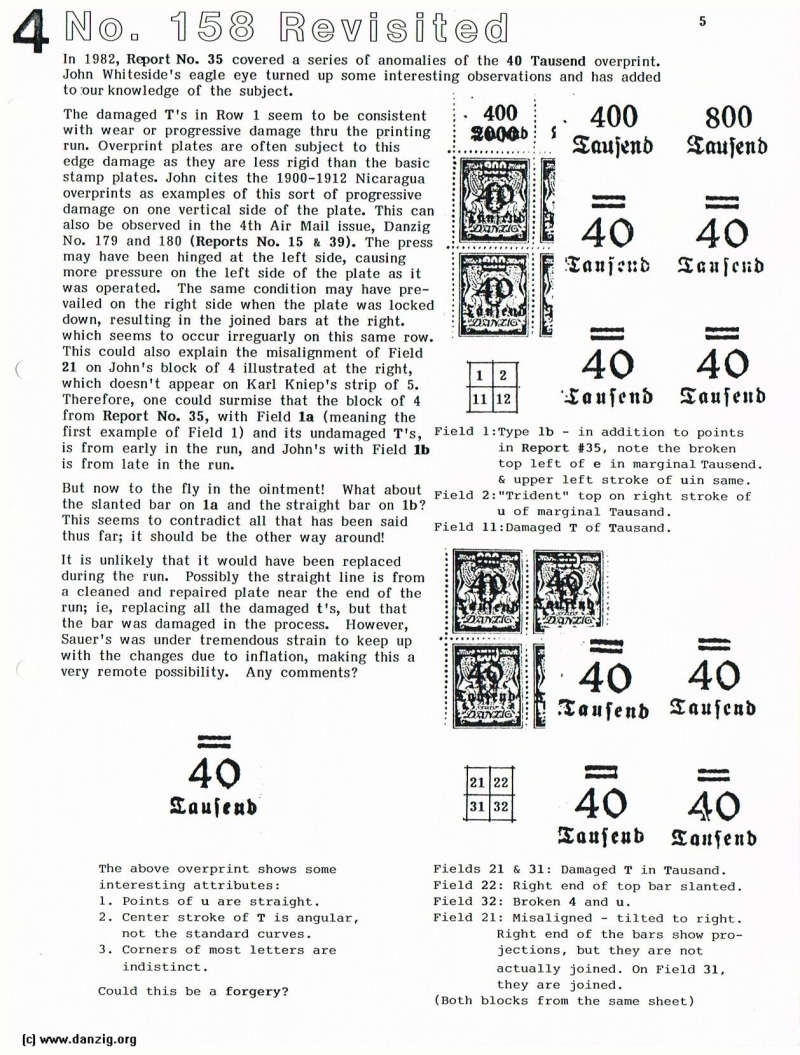
Michel No. 158 Revisited
In 1982, Report No. 35 covered a series of anomalies of the 40 Tausend overprint. John Whiteside’s eagle eye turned up some interesting observations and has added to our knowledge of the subject.
The damaged T’s in Row 1 seem to be consistent with wear or progressive damage thru the printing run. Overprint plates are often subject to this edge damage as they are less rigid than the basic stamp plates. John cites the 1900—1912 Nicaragua overprints as examples of this sort of progressive damage on one vertical side of the plate. This can also be observed in the 4th Air Mail issue, Danzig No. 179 and 180 (Reports No. 15 & 39). The press may have been hinged at the left side, causing more pressure on the left side of the plate as it was operated. The same condition may have prev ailed on the right side when the plate was locked down, resulting in the joined bars at the right. which seems to occur irreguarly on this same row. This could also explain the misalignment of Field 21 on John’s block of 4 illustrated at the right, which doesn’t appear on Karl Kniep’s strip of 5. Therefore, one could surmise that the block of 4 from Report No. 35, with Field 1a (meaning the first example of Field 1) and its undamaged T’s, is from early in the run, and John’s with Field 1b is from late in the run.
But now to the fly in the ointment! What about the slanted bar on la and the straight bar on ib? This seems to contradict all that has been said thus far; it should be the other way around!
It is unlikely that it would have been replaced during the run. Possibly the straight line is from a cleaned and repaired plate near the end of the run; ie, replacing all the damaged t’s, but that the bar was damaged in the process. However, Sauer’s was under tremendous strain to keep up with the changes due to inflation, making this a very remote possibility. Any comments?
Danzig Report Nr. 50 - January - February - March - 1986, Page 5.
Hits: 3437
Added: 20/06/2015
Copyright: 2025 Danzig.org

